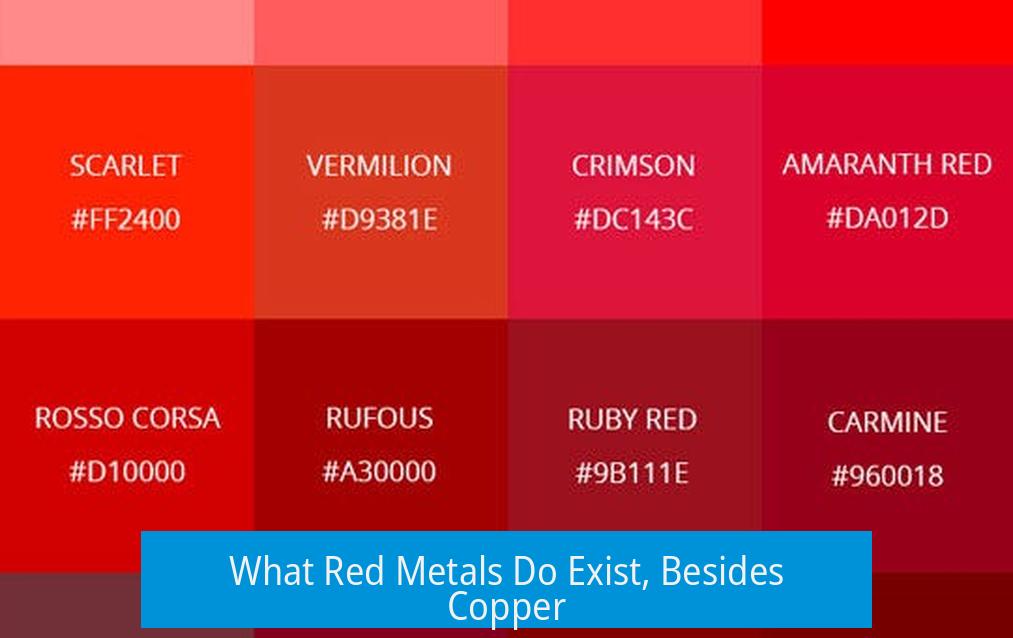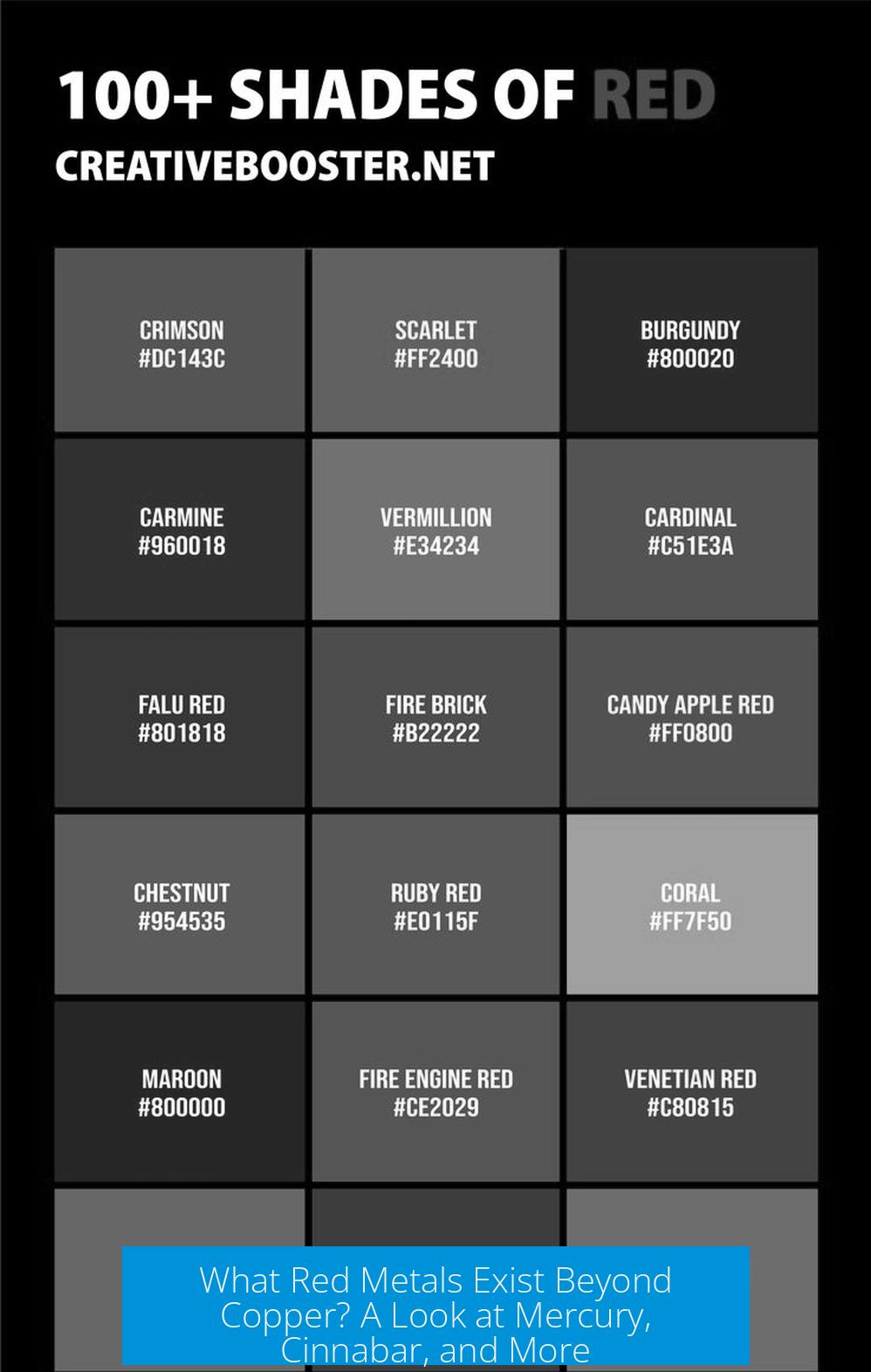What Red Metals Do Exist, Besides Copper?

Copper is the primary and essentially the only well-recognized red metal in its pure metallic form; other metals do not display a true red color intrinsically. Gold is another colored metal but has a distinct yellow hue rather than red. The appearance of metal colors depends on surface electron interactions rather than inherent pigment.
The Unique Red of Copper
Copper’s reddish color comes from surface plasmon resonance. This occurs when light interacts with free electrons on the metal surface, absorbing certain wavelengths and reflecting red tones. Gold and silver also exhibit color due to similar effects, but only copper shows a clear red metallic color.
Mercury and Cinnabar
Mercury metal itself has a silvery appearance and is not red. However, its ore, cinnabar (mercury sulfide, HgS), is distinctly red. Cinnabar is a mineral form used historically as a red pigment, but its color does not correspond to metallic mercury.
Myth and Miscellaneous Metals

- Orichalcum: Historically mentioned as a dark red metal associated with Atlantis. Its existence and composition remain speculative and mythological, lacking confirmation in modern metallurgy.
- Beryllium: Does not have an intrinsic red color. It is a silver-gray metal and does not display a red hue.
- Anodized Aluminum: Aluminum can be anodized to appear in various colors including red. However, the red color results from surface treatment, not from the metal itself.
Red Compounds and Pigments
While base metals (except copper) are not red, several metal compounds and oxides exhibit red coloration:
- Iron Oxide (Fe2O3): A common red pigment known as “red iron oxide,” widely used in paints and plastics.
- Other Metal Salts: Various metal salts can show red or reddish colors due to specific electronic transitions in their chemical complexes.
Summary Table: Red Metals and Related Colors
| Metal/Material | Color | Notes |
|---|---|---|
| Copper | Red (metallic) | True red metal; color from surface plasmon resonance. |
| Gold | Yellow-gold | Colored metal but not red. |
| Mercury | Silvery (metal); Red (ore: cinnabar) | Red color only in mercury sulfide ore. |
| Orichalcum | Dark Red (mythological) | Unconfirmed, not recognized in modern science. |
| Beryllium | Silver-gray | No red color. |
| Anodized Aluminum | Surface red possible | Red color due to anodizing, not metal itself. |
Key Takeaways
- Copper is the only true red metal in its metallic form.
- Gold is a colored metal but shows yellow tones.
- Red coloration of some ores and compounds (e.g., cinnabar, iron oxide) arises from chemical composition, not metallic elements.
- Surface plasmon resonance explains why copper and gold exhibit colors visible to the human eye.
- Other metals do not have intrinsic red color; red effects from surface treatments or mineral forms do not classify them as red metals.
Which metals besides copper exhibit a red color?
Copper is the main metal known for its red color. Gold has a distinct color but leans more towards yellow. No other base metals show a true red hue naturally.
Can ores or minerals appear red though their metals are not red?
Yes. Mercury itself isn’t red, but its ore, cinnabar, is a bright red mineral. The color comes from the mineral form, not the pure metal.
Are alloys or surface treatments a source of red metals?
Some alloys like orichalcum are linked to red hues historically or mythologically, but they are not confirmed red metals today. Anodized aluminum can look red, but the color results from surface treatment, not the metal itself.
Does iron count as a red metal?
Iron metal is not red. Its compounds, like iron oxide, create the red pigments widely used in paints and plastics. The red color comes from the compound, not iron as a pure metal.
Why do only copper and gold appear colored among metals?
Color comes from surface plasmon resonance, which affects how metals absorb and reflect light. Copper and gold’s electrons interact with light to show visible colors. Other metals don’t have this effect in the visible spectrum.





Leave a Comment